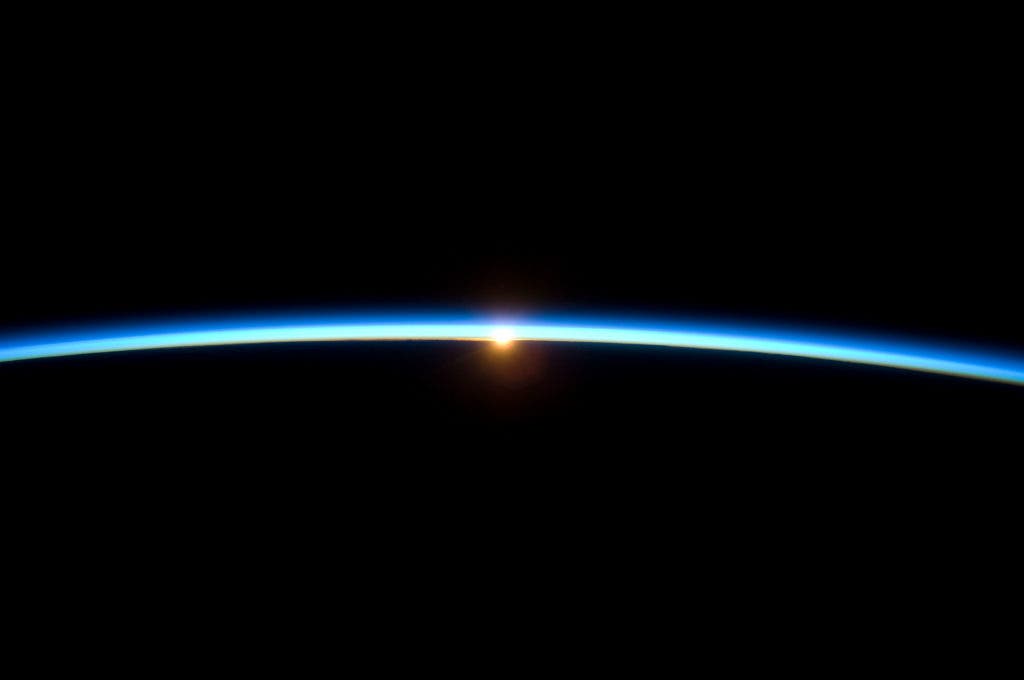Nothing changed with our atmosphere — just our calculations and assumptions have gotten better.

A new research paper proposes that we are all one step closer to space than we assumed. If the calculations are proven correct, we might, in fact, be a full 12 miles closer. The exact altitude of this boundary — the plane where the laws that order airspace get superseded by those governing outer space — is an important piece of information in world politics, the authors note.
The recalculated frontier
“The argument about where the atmosphere ends and space begins predates the launch of the first Sputnik,” wrote Jonathan McDowell, an astrophysicist at the Harvard-Smithsonian Center for Astrophysics, and sole author of the new paper. “The most widely accepted boundary is the so-called Karman Line, nowadays usually set to be 62 miles altitude.”
The boundary between atmosphere and space is known as the Kármán line after its discoverer, aerodynamics researcher, and engineer Theodore von Kármán. In 1963, when the line was proposed, von Kármán suggested that the speed needed to lift an object into the atmosphere is the same as the speed needed to keep it in orbit around the Earth. He also believed that the horizontal movement of the object on orbit would counteract the effects of gravity. According to McDowell, however, this just isn’t true. The position of the line was therefore calculated based on a faulty assumption and without any real means of testing — this was a time before real-life orbital readings could be performed.
For his study, McDowell drew on North American Aerospace Defense Command (NORAD) data detailing the orbital comings and goings of over 43,000 satellites. Most of these orbited far above the Karman line, so McDowell removed their paths from the study. About 50 satellites, however, were used in the calculations.
What set these 50 apart is that they all performed at least full rotations around the planet at low altitude (below 100km / 63 miles) as they re-entered the atmosphere at the end of their missions. The Soviet satellite Elektron-4, for example, performed ten full rotations around the planet at around 83 km (52 miles) before it burned up in the atmosphere in 1997. In other words, these cases revealed that satellites could still behave as if they were in outer space below the Karman line — which raises the possibility that the altitude line itself is overestimated.
McDowell used a mathematical model to find the altitude at which the orbits of these satellites finally started to degrade and they dropped back into the atmosphere — he found that these events occurred between 70 to 82 kilometers (41 to 55 miles) high. However, for most satellites, the 80-kilometer (50-mile) mark seems to be the lowest possible stable orbit. So McDowell proposes this altitude as the new accepted boundary between our atmosphere and outer space.
The suggestion may actually get some traction in the scientific community. The 80-kilometer mark fits with what we know of the atmosphere’s structure. The mesopause, stretching roughly between 83 and 100 kilometers high, is an area where the air’s chemical composition changes dramatically and charged particles become more abundant — which harkens more to the state of gases in outer space than those in our atmosphere. Below the lower edge of the mesopause, Earth’s atmosphere becomes a stronger force for airborne objects to reckon with, McDowell wrote.
“It is noteworthy that meteors (traveling much more quickly) usually disintegrate in the 43 to 62 miles altitude range, adding to the evidence that this is the region where the atmosphere becomes important,” he adds.
While most outer space operations, such as rocket launches, should remain relatively unchanged if the new boundary is adopted, McDowell wrote, it could raise some important political and territorial issues
The airspace above each country is generally considered to be part of that country — but outer space isn’t owned by anyone. If the limit of space is set at 100 kilometers high, for example, and an unauthorized satellite passes at 80 kilometers high, it could be rightfully considered an act of military aggression between states. Seeing as satellites tend to sometimes wobble up and down along their orbits, a lower limit of the atmosphere might help ease tensions.
The paper “The edge of space: Revisiting the Karman Line” will be published in the October issue of the journal Acta Astronautica.






